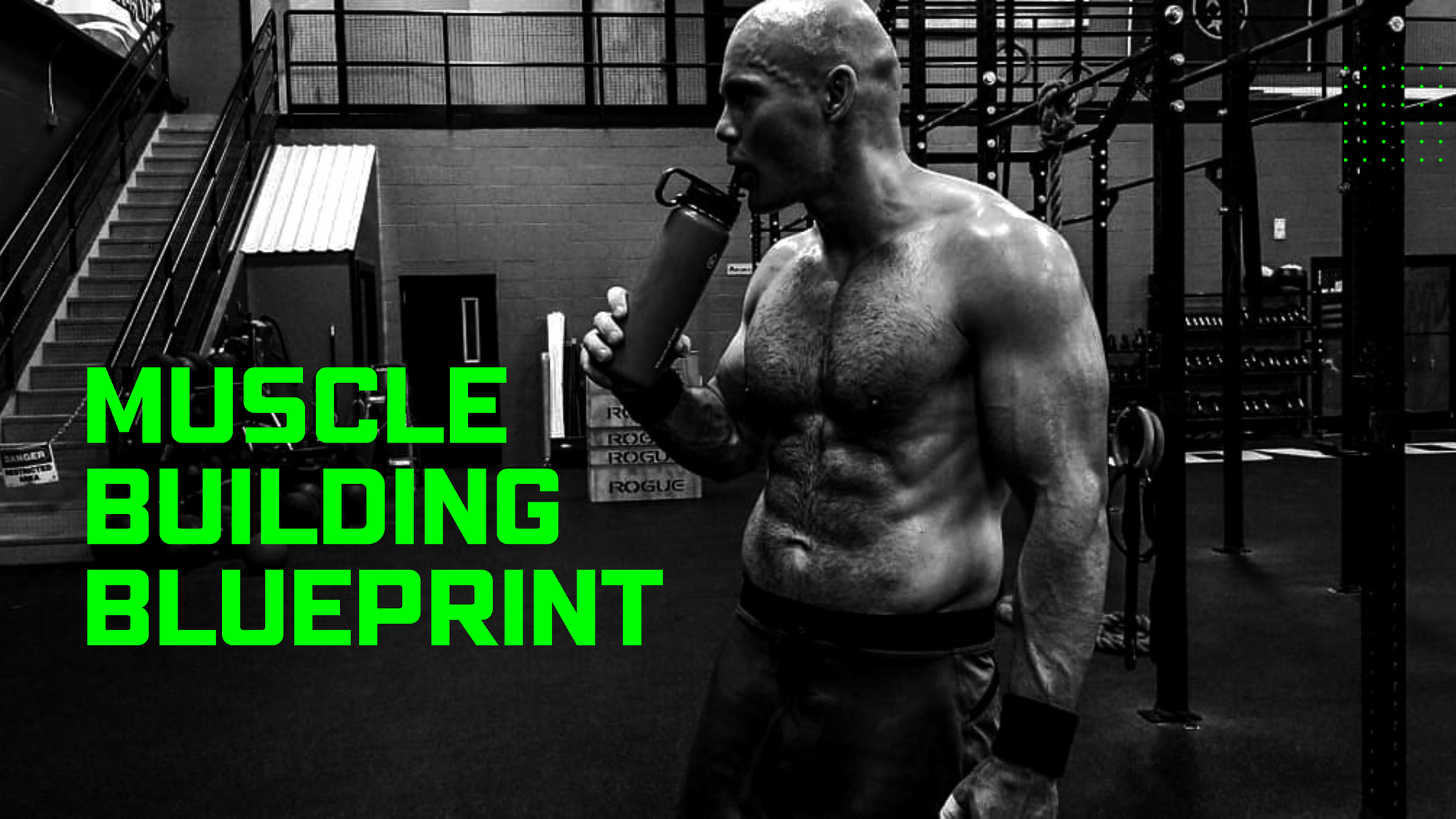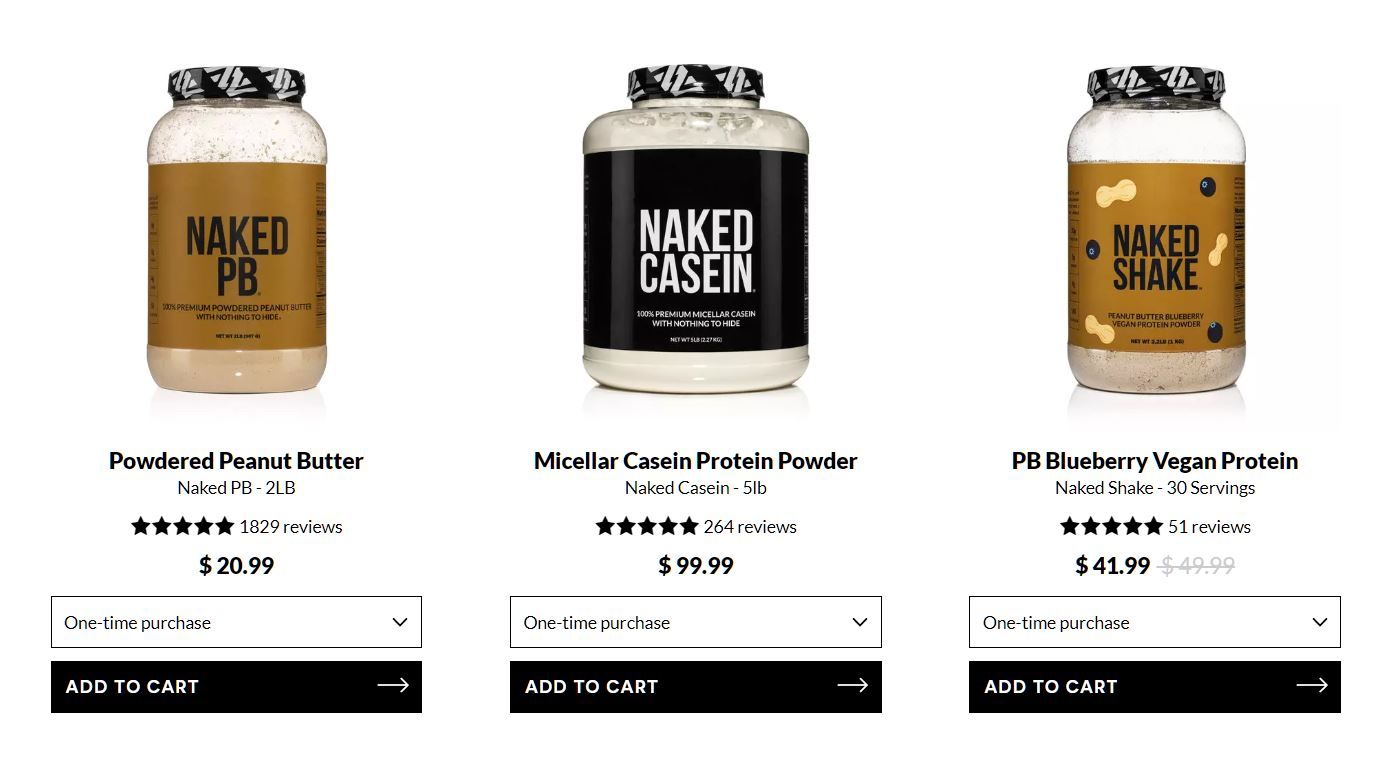How To Build Muscle: 6 Rules You Need to Know

1. Proper Nutrition for Muscle Building
Just as a car needs the right fuel to perform optimally, your body needs the right nutrients to promote muscle growth and recovery. The key components of a muscle-building diet are protein, complex carbohydrates, and healthy fats.
The Role of Protein in Muscle Growth
When it comes to muscle building, protein stands out as the essential macronutrient. It's often referred to as the building block of muscles, and for good reason. Each protein molecule is composed of amino acids, which are fundamental to the structure and function of our muscles. During strength training and other forms of exercise that challenge our muscles, muscle fibers undergo micro-tears. It's the repair of these micro-tears, facilitated by amino acids from protein, that leads to muscle growth. This makes protein crucial not only for muscle repair, but also for muscle building after workouts.
There are 20 different types of amino acids that can form a protein, nine of which are considered 'essential', meaning our bodies cannot make them and we must get them from our diet. Complete proteins, those that contain all nine essential amino acids, are particularly beneficial for muscle growth. Foods rich in complete proteins include lean meats, fish, eggs, and dairy products. Plant-based options like tofu, lentils, and quinoa are also good sources of protein, though some may not contain all essential amino acids on their own.
As for how much protein someone should eat, recommendations can vary depending on factors such as age, sex, physical activity level, and individual goals. However, a common guideline for muscle gain is to consume 1.6-2.2 grams of protein per kilogram of body weight per day. This range ensures that your body has enough amino acids to repair and build muscle tissue, particularly after a workout.
Protein also plays a role beyond muscle repair and growth. It's essential for the production of enzymes, hormones, and antibodies, and it helps in transporting various substances throughout the body. It is also vital for cell regeneration, healthy skin and hair, and overall growth and development.
In conclusion, incorporating enough protein into your diet is not just crucial for muscle growth, but it is also a key component of overall health and wellbeing. It's important to remember that while protein is essential, a balanced diet that includes a variety of nutrients is the foundation for optimal health and fitness.
The Role of Complex Carbohydrates in Muscle Building and Athletic Performance
Complex carbohydrates play a vital role in powering workouts and aiding in recovery. They are long chains of sugar molecules, which take longer to break down compared to simple carbohydrates. This slow digestion leads to a steady supply of energy and helps maintain stable blood sugar levels, avoiding the spikes and crashes associated with simpler carbohydrates. Whole grains, beans, fruits, and vegetables are rich sources of complex carbohydrates, which also provide vital fiber and various other nutrients.
Glycogen is a form of glucose (sugar) that is stored in our muscles and liver. It serves as a reserve of energy that can be quickly mobilized during physical activity. Glycogen is particularly important for athletes and those engaging in high-intensity workouts, as it can be readily broken down into glucose to meet immediate energy needs. During exercise, especially high-intensity or prolonged workouts, the body taps into these glycogen stores to fuel muscles.
After exercise, glycogen stores are depleted and need to be replenished to promote recovery and prepare for the next training session. Consuming carbohydrates after a workout is the most effective way to replenish these stores. This is why you often hear about athletes having a post-workout meal or snack that includes carbohydrates.
How much carbohydrates someone should eat varies depending on factors such as their total caloric needs, type of exercise, duration and intensity of workouts, and individual goals. As a general guideline, an active individual might aim to make about 45-65% of their total daily calories come from carbohydrates, according to the Dietary Guidelines for Americans. However, someone who is very physically active may need more.
As for simple carbohydrates, they are not entirely off the table, especially for athletes. Simple carbohydrates, such as those found in fruit or honey, can be quickly digested and absorbed, providing a fast source of energy. This can be useful during prolonged endurance exercise, when energy needs are immediate, or immediately after intense exercise, when the goal is to quickly replenish glycogen stores. However, it's important to limit intake of simple carbohydrates that come from processed or sugary foods, as they can lead to rapid blood sugar fluctuations and provide less nutritional value.
Although, complex carbohydrates should make up the bulk of your carbohydrate intake due to their sustained energy release and additional nutritional benefits, simple carbohydrates also have their place in an athlete's diet. As with most things, balance and moderation are key.
The Importance of Healthy Fats in Muscle Building
Healthy fats, though sometimes overlooked in a muscle-building diet, play several crucial roles in the body. They are a dense source of energy, provide the structural components of cell membranes, and contribute to the production of hormones, including testosterone, which is a key player in muscle growth.
Fats are classified into several types, including saturated, monounsaturated, and polyunsaturated fats. All these types of fats have their place in a balanced diet, but it's the latter two that are often highlighted as "healthy fats" due to their beneficial effects on heart health and inflammation.
Monounsaturated fats can help lower bad LDL cholesterol levels while increasing good HDL cholesterol levels. They also contribute to the production of testosterone. Foods rich in monounsaturated fats include avocados, nuts and seeds, and olive oil.
Polyunsaturated fats, which include omega-3 and omega-6 fatty acids, are essential fats, meaning our bodies cannot make them, and we must obtain them from our diet. These fats play vital roles in brain function and cell growth. Omega-3 fatty acids, in particular, are known for their anti-inflammatory properties and are found in fatty fish like salmon and mackerel.
However, the value of saturated fats, like those found in beef and eggs, has been a subject of debate for many years. They have often been villainized due to their association with increased cholesterol levels and heart disease risk. Recent research, however, suggests that not all saturated fats are the same, and that the relationship between saturated fat, cholesterol, and heart disease is more complex than previously thought.
While it's still recommended to limit the intake of certain sources of saturated fats, particularly processed foods, natural sources of saturated fat like beef and eggs can be part of a balanced diet. These foods not only provide saturated fats but are also excellent sources of protein and other nutrients like iron and choline, which are important for muscle health and overall body function.
It's worth noting that cholesterol, which is present in foods like beef and eggs, serves as a precursor to steroid hormones, including testosterone. So, consumption of these foods may support testosterone production and, by extension, muscle growth.
The key to a healthy diet is balance. Consuming a mix of different types of fats, from a variety of food sources, can help ensure you get the broad range of nutrients your body needs for muscle growth, hormone production, and overall health. As always, it's important to consider the quality of the foods you're eating and to aim for whole, minimally processed foods whenever possible.
The Role of Meal Timing in Muscle Building
Meal timing is a strategy that focuses on consuming meals and snacks at specific times around workouts to optimize performance and recovery. When done correctly, it can provide the energy needed for training and aid in muscle recovery and growth.
Pre-Workout Nutrition: Eating a balanced meal or snack before a workout can provide the energy needed to power through your training. This meal should ideally contain both protein and carbohydrates.
-
Carbohydrates are your body's preferred source of energy. Consuming them before a workout ensures that you have sufficient glycogen stores for your training session. Foods rich in complex carbohydrates, like whole grains, beans, or fruits, are ideal as they provide a steady release of energy.
-
Protein consumed before a workout can help reduce muscle protein breakdown during the workout and increase muscle protein synthesis, contributing to better muscle recovery and growth. Lean meats, dairy, eggs, or plant-based proteins like tofu or lentils are good choices.
Ideally, you should aim to have this meal 2-3 hours before your workout. However, if this isn't possible, a smaller snack 30-60 minutes before your workout can also be beneficial.
Post-Workout Nutrition: After a workout, your body is primed to replenish energy stores and repair and build muscle tissue, making this an optimal time to consume a protein-rich meal.
-
Protein is crucial in this phase to provide the amino acids necessary for muscle repair and growth. Aim to consume 20-40 grams of protein after your workout.
-
Carbohydrates are also important after a workout to replenish the muscle glycogen that was used during your workout. The amount needed can vary depending on the intensity and duration of your workout, but a general guideline is to consume 1.2 grams of carbohydrates per kilogram of body weight.
This meal should ideally be consumed within 45 minutes to an hour after your workout. This is often referred to as the "anabolic window" due to the body's heightened state of nutrient absorption.
2. Progressive Overload: The Key to Muscle Growth
Progressive overload is a fundamental concept in strength training and muscle building. It involves gradually increasing the demands on your musculoskeletal system to continuously challenge your muscles and stimulate growth.
The principle of progressive overload is based on the fact that our bodies adapt to the stresses placed upon them. When you lift weights, you create microscopic tears in the muscle fibers. This damage triggers a repair process in which the body produces new muscle protein strands to repair the damaged areas, resulting in muscle growth.
However, if you continue to lift the same amount of weight for the same number of repetitions over time, your muscles will become accustomed to that level of stress, and growth will stall. This is where progressive overload comes in. By continually increasing the demands on your muscles, you keep them adapting and growing.
There are several ways to implement progressive overload:
-
Increasing the Weight: This is the most straightforward method. Once you can comfortably complete your desired number of repetitions with a certain weight, increase the weight slightly in your next workout.
-
Increasing the Volume: This involves doing more repetitions or sets with the same weight. For example, if you're currently doing 3 sets of 10 reps, you could increase to 4 sets of 10 reps.
-
Increasing the Frequency: You could increase the number of times you perform a certain exercise each week. However, it's important to allow for sufficient recovery time between workouts to avoid overtraining.
-
Decreasing Rest Time: By reducing the rest time between sets, you force your muscles to work harder and recover more quickly, increasing the intensity of the workout.
-
Increasing the Intensity: This could involve incorporating more challenging variations of an exercise, or performing your repetitions more slowly to increase the time under tension for your muscles.
It's crucial to implement progressive overload carefully and gradually to avoid injury. It's also important to listen to your body and allow for adequate rest and recovery. Overtraining can lead to injuries and hinder your progress.
By listening to your body, it is meant pay attention to your soreness levels. If a training session left you very sore, then decrease the volume or intenstity of your training until you find a formula that stimulates little to no "DOMS", delayed onset muscle soreness. Once your body has adapted and your current formula does not produce DOMS, use that as a practical sign to increase volume or intensity.
Recommended Equipment Brands

Fringe Sport
Fringe Sport is the official supplier to the garage gym functional fitness movement. We serve the lifter, the WODder, and any individual with a burning desire to be better tomorrow than they are today. FREE SHIPPING!

GET RX'D
3000+ Outfitted Facilities Worldwide. 30 Years in Business. We constantly strive to offer the best possible buying experience - this includes industry-leading customer service, a mobile-friendly layout, fast and affordable shipping, consistently affordable pricing, and access to the most sought-after products on the market.
3. The Role of Compound Movements in Muscle Building
Compound movements, also known as multi-joint exercises, are exercises that engage multiple muscle groups and joints simultaneously. They include exercises like squats, bench press, deadlifts, cleans, and snatches. These exercises are often recommended for those looking to build muscle due to their several advantages.
-
Greater Muscle Activation: Compound movements engage multiple muscle groups at once, leading to greater overall muscle activation compared to isolation exercises. For example, a squat doesn't just work your quadriceps—it also engages your glutes, hamstrings, and core. This greater muscle activation can lead to more significant muscle growth over time.
-
Greater Hormonal Response: Compound movements stimulate a more substantial hormonal response compared to isolation movements. They trigger the release of growth hormone and testosterone, both of which play key roles in muscle growth and repair.
-
Increased Caloric Burn: Due to the involvement of multiple muscle groups, compound exercises burn more calories than isolation exercises performed for the same duration. This can be beneficial for those looking to build muscle while also managing body fat levels.
-
Functional Strength and Mobility: Compound movements mimic real-world motions and therefore help build functional strength. They also promote mobility and flexibility as they take your joints through a full range of motion.
-
Efficiency: If you're short on time, compound movements allow you to work multiple muscle groups simultaneously, making your workout more efficient.
However, this is not to say that isolation exercises have no place in a muscle-building program. Isolation movements, which target a single muscle group, can be beneficial for addressing specific areas of weakness or imbalance, and for emphasizing a particular muscle group.
As always, it's important to consider individual goals, abilities, and preferences when designing a workout program.

Synergee
Synergee understands why fitness equipment needs to be affordable, accessible, and reliable because we’ve been family-owned and family-focused from the start.
4. Time Under Tension
Time under tension refers to the total amount of time a muscle is under strain during a set. The concept is based on the theory that muscles grow in response to mechanical tension. By increasing the duration of this tension, you can stimulate greater muscle growth.
Increasing time under tension often leads muscular failure. Training to failure means performing an exercise to the point where your muscles are so fatigued that you can't complete another repetition with proper form.
Muscular failure is a tool that can be used in resistance training to provide a significant stimulus to your muscles. When you push your muscles to their limit, you're creating a large amount of mechanical tension and muscle damage, which can trigger the physiological processes involved in muscle growth.
However, it's important to note that while training to failure can be beneficial, it may not be necessary for all individuals or in all situations.
One way to manipulate time under tension is through your rep tempo. For example, you could lower the weight more slowly on the eccentric (lengthening) part of the movement, or pause at the top or bottom of the movement. By doing this, you increase the total time that your muscles are under tension in each rep.
The optimal time under tension for muscle growth isn't set in stone, but a total TUT of 20-40 seconds per set is often recommended.
It is worth noting, by simply increasing the weight to your maximum for the rep range you selected, and pushing yourself to near failure, you will easily provide the time under tension needed to promote muscle growth. Dedicating mental effort to execute strict (2-0-2) tempo timing is not necessary. It is still, however, beneficial to know time under tension is variable you are after in order to stimulate muscle growth.
5. Rest and Recovery: Essential for Muscle Growth
When it comes to building muscle, this is when the real magic happens—muscle repair, strengthening, and growth.
The Science of Muscle Recovery
During strength training or resistance exercise, your muscles undergo microscopic damage, which triggers an inflammatory response. This inflammation signals the body to initiate the repair process. Specialized cells called satellite cells rush to the damaged muscle fibers and fuse to them, helping to repair the damage and increase the size of the muscle fiber. This process is known as muscle protein synthesis, and it's the primary mechanism through which muscles grow.
This process doesn't happen while you're lifting weight, it occurs during the recovery period after your workout, and it's heavily dependent on rest and nutrition. This is why adequate rest is crucial for muscle recovery and growth.
The Importance of Sleep
Sleep is a vital part of the recovery process. During sleep, your body produces Growth Hormone (GH), which plays a crucial role in tissue growth and repair. Lack of sleep can inhibit the production of GH, hindering muscle recovery and growth.
In addition, adequate sleep helps maintain a balance of hormones that manage hunger and satiety—ghrelin and leptin. Poor sleep can disrupt the balance of these hormones, potentially leading to overeating and fat gain.
Therefore, prioritizing quality sleep is essential for anyone looking to build muscle. Aim for 7-9 hours of sleep per night, and consider incorporating sleep-promoting habits like establishing a regular sleep schedule and creating a quiet, dark, and cool sleep environment.
Active Recovery and Muscle Health
Rest days don't necessarily mean you have to be completely inactive. Incorporating active recovery—low-intensity exercise that gets your blood flowing without stressing your muscles—can be beneficial for muscle health.
Active recovery exercises, like walking, cycling at an easy pace, or performing gentle yoga, can increase blood flow to your muscles, helping to deliver nutrients for repair and growth and remove waste products. This can enhance the recovery process and reduce muscle soreness.
6. Supplementation: Enhancing Muscle Building
While a balanced diet should always be the foundation of any fitness regimen, supplements can play a supporting role in muscle building. They can help to fill nutritional gaps, enhance performance, and promote recovery. Here, we delve into some of the most popular supplements for muscle building: protein powders, creatine, and branched-chain amino acids (BCAAs).
Protein Powders
Protein is vital for muscle repair and growth, and protein powders provide a convenient way to increase your protein intake. They can be particularly useful for those who struggle to meet their protein needs through food alone.
Whey protein is one of the most popular types of protein powder due to its high biological value and rapid absorption rate, making it ideal for post-workout recovery. It's a complete protein, meaning it contains all essential amino acids, including the BCAAs that are crucial for muscle protein synthesis.
Casein protein, another milk-derived protein, is digested more slowly than whey, making it a popular choice for a pre-bedtime snack to provide a steady supply of amino acids during sleep.
Plant-based proteins, like soy, pea, or rice protein, are suitable for those who follow a vegan or vegetarian diet. While many plant proteins are not complete proteins, many plant-based protein powders combine different sources to provide all essential amino acids.
Creatine
Creatine is one of the most well-researched supplements in the field of sports nutrition. It's naturally produced in the body and is also found in foods like meat and fish.
Creatine supplements work by increasing the amount of creatine phosphate in your muscles, which can be used to produce more ATP (adenosine triphosphate)—the primary energy molecule in your cells—during short, intense bouts of exercise. This can enhance performance, allowing you to lift heavier weights or perform more repetitions, leading to greater muscle growth over time.
Most people benefit from a creatine monohydrate supplement, with a typical dosage of 5 grams per day. It's usually taken as a post-workout supplement due to its role in recovery and muscle growth, but the timing is not crucial as long as you're consistently consuming it each day.
Branched-Chain Amino Acids (BCAAs)
BCAAs refer to three essential amino acids: leucine, isoleucine, and valine. They're called "branched-chain" due to their chemical structure.
BCAAs are particularly important for muscle growth because leucine, one of the BCAAs, activates a pathway in the body that stimulates muscle protein synthesis.
BCAA supplements are often taken before or during a workout to reduce muscle damage and post-workout soreness, and to improve exercise performance. However, if you're consuming enough protein through your diet or a protein supplement, you may already be getting enough BCAAs and may not need an additional supplement.
While supplements can support muscle building, it's important to remember that they are just that—supplements. They are meant to supplement a balanced diet and a well-structured exercise program, not replace them. Always consult with a healthcare professional or a registered dietitian before starting any new supplement regimen.
Recommended Supplement Brands

Naked Nutrition
Our selection of premium dietary and workout supplements will help you build muscle, recover faster and boost your immune system health. From our best-selling Creatine to our Collagen & Supergreens powder, all our nutritional supplements use the purest ingredients and contain no artificial ingredients. Shop today and Get Naked.


